I Tried Blood Flow Restriction Shorts And Leg Day May Never Be The Same Again
Will this revolutionary new kit give your strength training the edge? I strapped in to find out
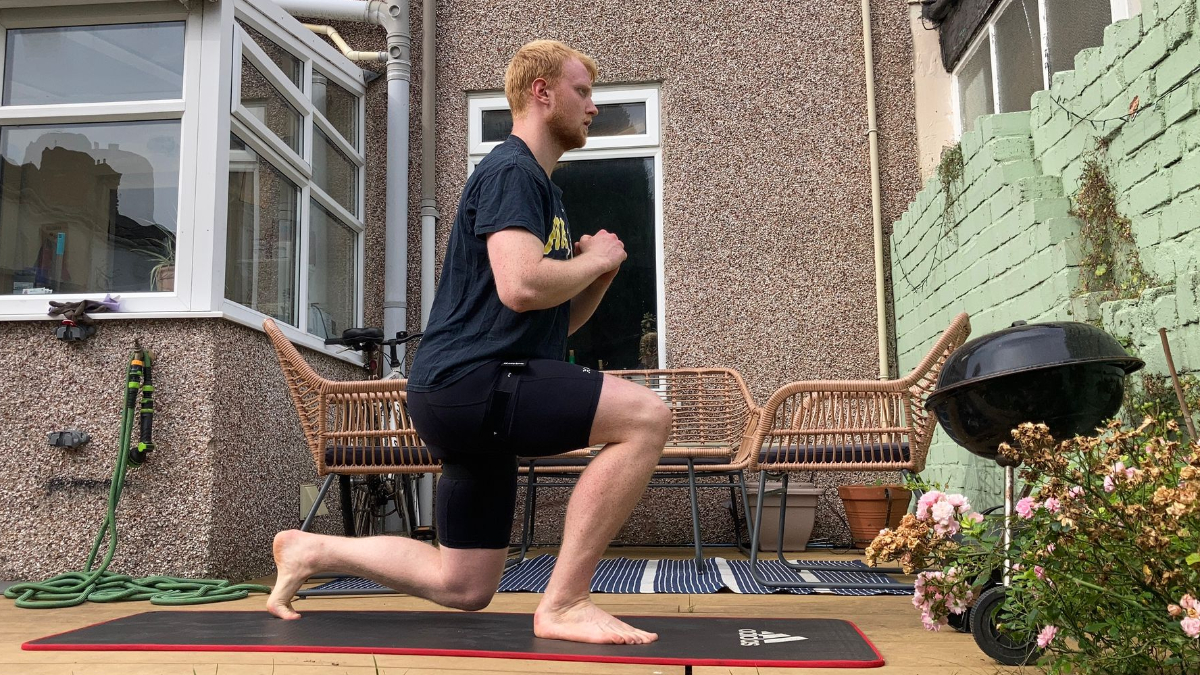
In my mind, blood flow restriction training summons up images of Arnold Schwarzenegger and his ilk cranking out curls in pursuit of a monstrous pump. But blood flow restriction, or BFR, is good for far more than just bigger biceps—at least according to Dr Warren Bradley, the founder of Hytro which makes tops and shorts with integrated BFR straps.
After Coach spoke to St Helens’ head of strength and conditioning Matt Daniels about how the Super League team uses BFR training, I was offered the chance to try the shorts. Once I had received a pair, Bradley jumped on a video call to explain how to get the most out of them.
He was also happy to hear that CrossFit was my exercise approach of choice, saying the shorts could definitely benefit my training.
“I’m excited to try them—hopefully my squat one-rep max goes through the roof,” I half-joked as we wrapped up.
“It will. I guarantee you,” was Bradley’s response.
What is BFR training?
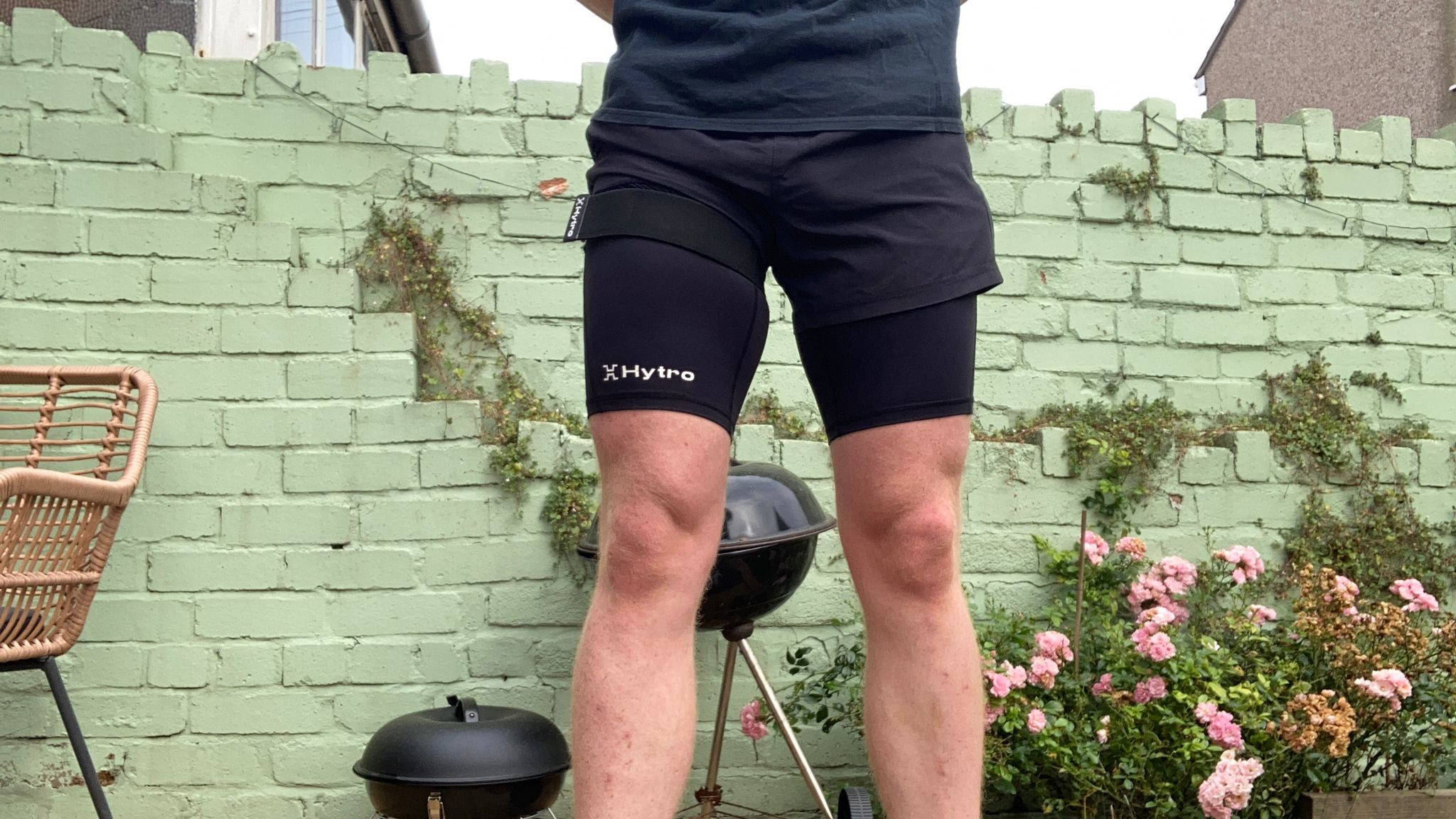
BFR training uses straps to reduce blood flow to your arm or leg muscles while you perform low-intensity exercise.
BFR training has been found to deliver positive training adaptations while you recover too, such as improving energy production and promoting muscle growth.
Get the Coach Newsletter
Sign up for workout ideas, training advice, reviews of the latest gear and more.
How does BFR work?
Pay attention—here comes the science bit.
“Muscles use oxygen, generally speaking, even just at rest,” says Bradley. “But because that blood is then restricted from coming back, the muscle becomes deoxygenated. That’s called hypoxic.
“When you have a hypoxic muscle, it becomes quite stressed and it adapts by extending its capillary beds, so what you get is more capillarization [the formation of blood-transporting capillary networks].
“You also get something called mitochondrial biogenesis, which is basically an increase in the little powerhouses of the cell that make ATP or energy from glucose and oxygen.”
What this means is that more energy will be available to your working muscles—music to my ears as a CrossFit aficionado with a penchant for grueling workouts.
How To Use The Hytro BFR Shorts
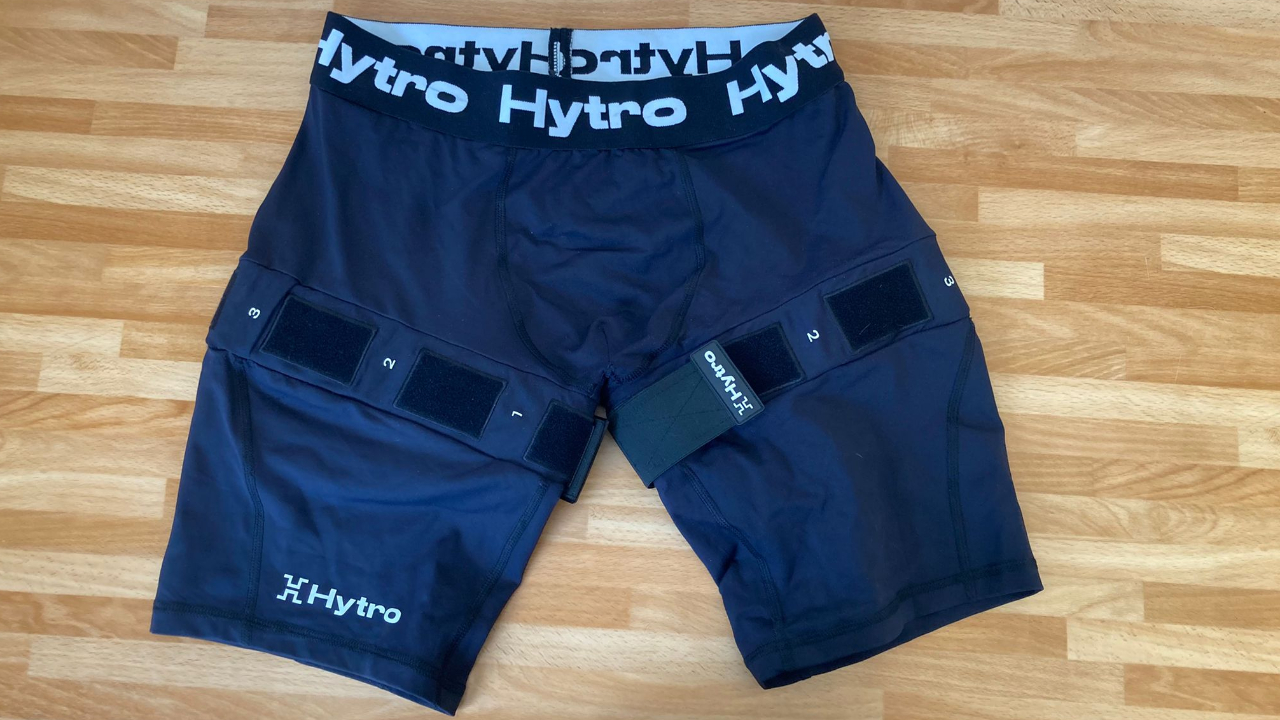
The Lycra bottoms look like typical sports undershorts, except they come with elasticated straps at the top of each thigh which can be tightened and secured in place with Velcro.
There are four marks on the shorts to help you choose the degree of restriction you want, and the higher the number, the greater the pressure. Bradley advised me to start at no more than three while I get used to BFR, then build up over time.
Minutes after the call ended, my curiosity got the better of me and I couldn’t resist a few unweighted squats. For hypertrophy training, Bradley recommends using them for a five-minute finisher, rather than donning them for a full workout.
Having hit a heavy leg workout earlier that morning, I decided to tackle four sets of 20 with a 30-second rest between sets, and I was surprised how quickly the shorts had an impact.
The first couple of sets felt easy. The third and fourth were anything but. “It’s like hitting a brick wall,” Bradley says, and that’s spot-on. All of a sudden, a simple unweighted squat feels close to a maximal effort and my swollen thighs are on fire.
This sensation is usually reserved for bodybuilders who are an hour or more into an intense leg day, yet here I am feeling it after a few minutes of work. Now I’m excited to see what else they can do.
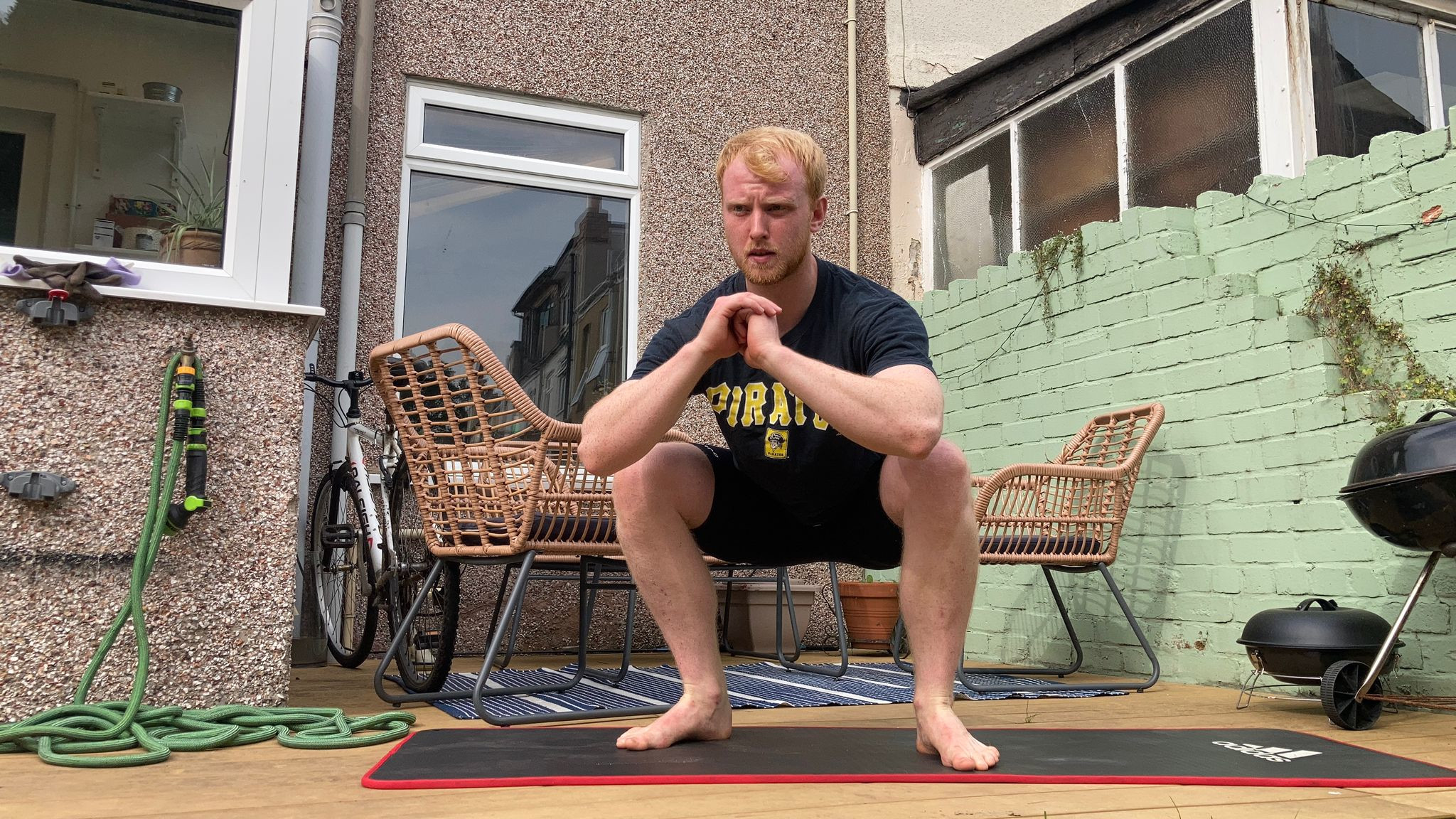
How To Use BFR Shorts For Recovery
Muscle growth was the thing I was most excited about going into this, but that came across as secondary in my chat with Bradley. The thing he focused on most was the shorts’ ability to aid recovery.
“There are two different ways you can recover with BFR: active and passive,” he says.
For passive recovery, you just strap in and sit down. If you’re opting for active recovery, Bradley recommends wearing them for a walk or session on an exercise bike.
Whichever one you choose, the format is the same: three sets of five minutes, with a two-minute rest between sets.
After spending some time getting used to the shorts at setting three, I decided to top and tail my Friday training session with some BFR work.
My legs were already pretty beaten up from a week’s worth of training, but as prescribed I tightened the straps on the shorts for three rounds of five minutes on my walk to the box, worked through my training for the day (a superset of barbell squats and high box jumps, a barbell cycling EMOM and CrossFit Open workout 22.2—a couplet of deadlifts and burpees), then popped them on again for three rounds of five minutes during the amble home.
While I don’t have a lab on hand to investigate the exact physiological impact, I will say that my thighs felt fresher and less like lead after a walk wearing the shorts. Plus, the barbell squat sets felt surprisingly good and I did beat my 22.2 score from the year before by 10 reps.
Given how leg-intensive the session was, I also expected to be lumbering awkwardly around the house and mumbling about nasty DOMS for the next 12 hours, but that didn’t come to pass.
Don’t get me wrong, I could still feel that I’d worked hard, but the usual aches and heaviness were markedly less unpleasant—a big win in my book, and that of my partner, who usually has to put up with my incessant moaning.
I also liked the convenience of the shorts. I could pop them on under my regular workout shorts then tighten and secure the straps when necessary. This way, I was able to wear them on my way to and from the gym, watching TV, washing up, and even during dog walks.
Yes, I got a couple of funny looks as the occasional passer-by watched me yank a strap tight around my thigh, but once it’s in place no-one’s any the wiser.
Are The Hytro Shorts Worth It?
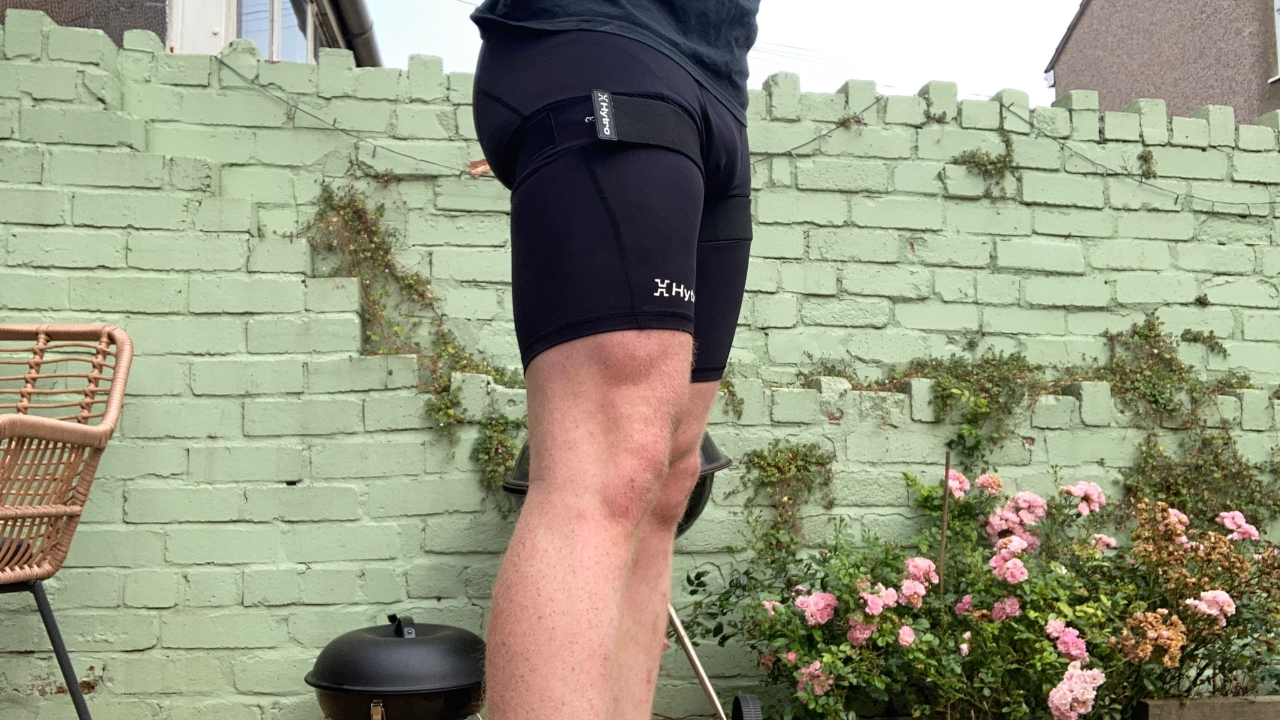
I like these shorts. They feel like they’re boosting my recovery and, unlike yoga, massage guns and compression boots, the way I used them didn’t require any extra effort or time commitment.
Like massage guns and compression boots, though, Hytro’s shorts are expensive at £229. For this reason alone, I wouldn’t recommend them for the everyday or casual athlete.
If you’re trying to build muscle and boost your recovery, there are far more cost-effective options open to you. Namely, the old cocktail of protein and progressive overload for muscle gain, and a mixture of mobility work and other more affordable recovery methods.
However, if you take your training seriously and are looking for something to give you an edge over your opponent, the Hytro shorts might be worth a look.
I did enjoy wearing them, and my legs definitely felt less battered than usual after a quick 20-minute recovery walk.
I got the opportunity to test Bradley’s claim that using them would send my squat PR skywards—though the timing was all wrong. I’d spent the week before at Glastonbury festival and so, when testing my barbell squat, I ended up way off my best. I’ll leave you to imagine why a festival trip might have had some effect!
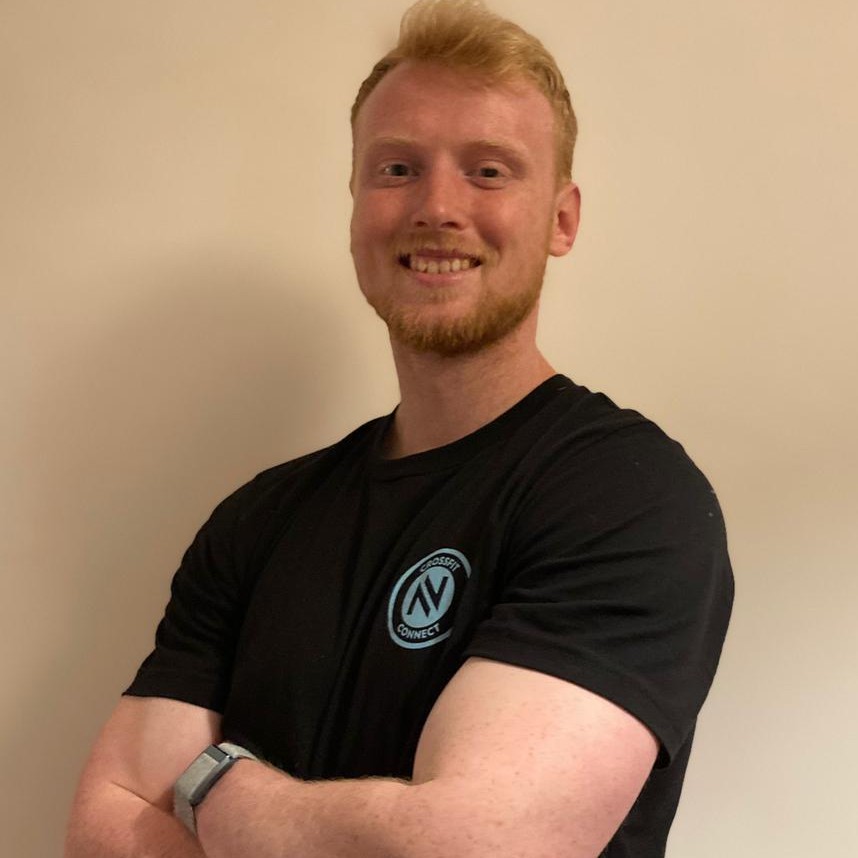
Harry covers news, reviews and features for Coach, Fit&Well and Live Science. With over a decade of training experience, he has tried everything from powerlifting to gymnastics, cardio to CrossFit, all in a bid to find fun ways of building a healthy, functional body.
